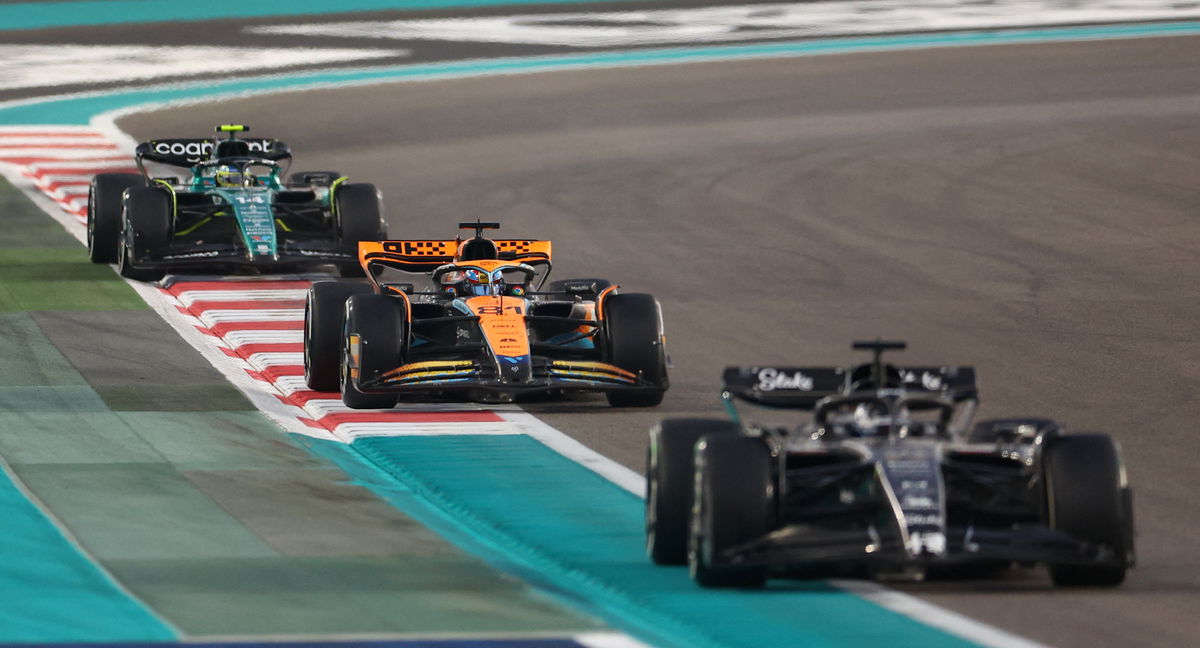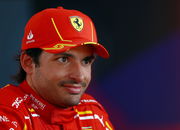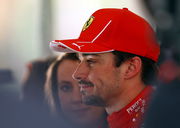
Reuters
Formula One F1 – Abu Dhabi Grand Prix – Yas Marina Circuit, Abu Dhabi, United Arab Emirates – November 26, 2023 McLaren’s Oscar Piastri in action during the race REUTERS/Rula Rouhana

Reuters
Formula One F1 – Abu Dhabi Grand Prix – Yas Marina Circuit, Abu Dhabi, United Arab Emirates – November 26, 2023 McLaren’s Oscar Piastri in action during the race REUTERS/Rula Rouhana
When victory and defeat are defined by mere fractions of a second in a sport, you better have an extremely good clock to time everything. And that’s where the concept of intervals takes center stage in Formula 1. It’s a term you might have heard quite a few times if you’ve seen a Formula 1 qualifying session unfold. It’s the heartbeat of this high-speed drama, where time is the ultimate arbiter of success. From pit stops to qualifying laps to the race itself, every moment counts during a race weekend. In the realm of Formula 1, the term ‘interval’ signifies the gap between two cars on the track.
Watch What’s Trending Now!
The Formula 1 timing system operates with a precision that matches the intensity of the sport itself. The interval, always measured in seconds, is accurate down to one ten-thousandth of a second. This level of detail is not merely for show. It’s the backbone of accurate lap times. It allows drivers to use advanced Formula 1 features like the Drag Reduction System (DRS), which only works if a driver manages to be precisely under a second to the car in the front. And to measure whether 2 cars traveling close to 200 miles an hour are strictly within a second of each other is no joke.
ADVERTISEMENT
How Does F1 Measure the Interval?
The precision of intervals in Formula 1 is nothing short of awe-inspiring. Since the late 1980s, each Formula One car has been equipped with a transponder, a tiny device that transmits radio signals with astonishing accuracy. These transponders emit radio signals, enabling tracking accuracy to a remarkable ten-thousandth of a second. Also, these transponders are synchronized with timing loops strategically positioned throughout the circuit.
ADVERTISEMENT
Encased in silicon, the timing loops are positioned just an inch below the driving surface. These timing loops are strategically placed at critical locations, including the start-finish line, pit lane, grid slots, DRS detection, and activation points, to name a few. Each time a car passes over a loop, the transponder records a unique identification that is subsequently sent to a decoder.
ADVERTISEMENT
This decoding process is at the core of interval measurement. It logs the precise time when a car passes a specific point on the circuit. It also offers a comprehensive view of each car’s location and corresponding time. Calculating the gap between two cars relies on the difference in the time each car crosses a specific point on the circuit, providing a real-time understanding of their positions.
Top Stories
Who Is Canadian F1 Billionaire Lawrence Stroll’s Daughter & Heiress Chloe Stroll?

Who Is Oscar Piastri’s Father, Chris Piastri? Co-Founder of Multibillion Dollar Automotive Company

Carlos Sainz Debunks Biggest ‘Smooth Operator’ Myth After Its Return at Australian GP

Red Bull Could Descend Into a Ferrari-Like State & Here Is Why!

Who Is Charles Leclerc’s Mother, Pascale Leclerc?

The data from these loops doesn’t stay hidden. It’s sent to the control center, seamlessly feeding into live timing screens. This real-time tracking ensures that fans in the stands and those watching from home are privy to the intricacies of the race, with accurate calculations for various parameters.
Read More: Most Dominant Formula 1 Race Victories of All Time
ADVERTISEMENT
But with all the talks about the “interval,” you might also have seen that sometimes the word “leader” is written beside the driver in front of the pack. But how are these two different?
What is the Difference Between Interval and Leader?
Whenever the term “leader” graces the driver at the front of the field, it introduces a unique set of timings, signifying more than just a position on the grid. These timings serve as a snapshot of how far each driver trails behind the race leader. Essentially, it’s the sum of all the time gaps between every driver and the one setting the pace.
ADVERTISEMENT
LAP 25/58: RACE CLASSIFICATION
As it stands Mercedes would pip Ferrari to P2 in the constructors' championship 👀
But there's a long way to go in this race#F1 #AbuDhabiGP pic.twitter.com/mJe4JpIs46
— Formula 1 (@F1) November 26, 2023
For instance, if Max Verstappen commands the race and “leader” is written next to his name, the times listed for all other drivers tell us the exact seconds each contender lags behind him. This insight becomes instrumental for everyone enjoying the race, whether in the grandstands or from their home, offering a comprehensive view of the race dynamics and individual driver performances. The “leader” becomes the benchmark when the race ends. The race results are always determined by how many seconds any given driver has finished behind the race winner.
But what if the system was ever to fail? Does F1 have any backup plan if the setup for calculating intervals ever falters? The short answer is yes.
ADVERTISEMENT
Backup systems for reliability: F1 ensures precision against all odds
In a world where precision is non-negotiable, Formula 1 doesn’t leave anything to chance. A robust set of backup measures is seamlessly integrated to account for potential failures in the system. Infrared cameras strategically positioned at sector lines and the start line can identify and time cars if the transponder fails.
#F1 start position & jump start detection use the car's timing transponders.
One under the nose and secondary one under the tail light.
Loops in the track, under the grid position, pick up the transponder.
Being offline is seen as an advantage, same as jumping the start.#F1Tech pic.twitter.com/9s6fyfohEy— Craig Scarborough (@ScarbsTech) March 19, 2023
ADVERTISEMENT
But that’s not all. Time-linked video cameras, both on the side of the circuit and the cars themselves provide an additional layer of redundancy. These cameras record the breaking of a light beam at the start-finish line, ensuring timing even in the event of a system-wide power loss.
Before each Grand Prix weekend kicks off, a test F1 car is sent around the track. It’s not for show; it’s a meticulous calibration and verification process for all timing systems. This precautionary measure ensures that every component is working correctly, providing the highest level of accuracy when it matters the most.
Watch This Story | Formula 1 Broke a New Record With The 2022 Imola GP Qualifying
ADVERTISEMENT
The next time you watch a Formula 1 race, pay close attention to the intervals. It’s the language of the world’s fastest motorsport. The precision, the technology, and the backup systems all converge to create a system that can time two cars with a margin of a few ten-thousandth of a second between them.
ADVERTISEMENT
ADVERTISEMENT
ADVERTISEMENT

